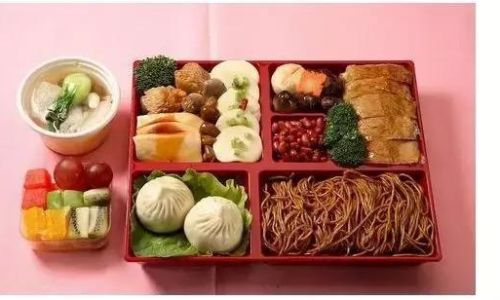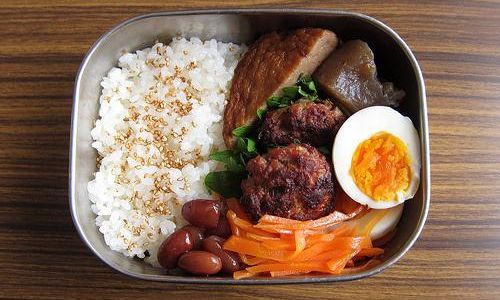Introduction
Lunch, often referred to as the “midday meal,” serves as a crucial energy booster between breakfast and dinner. It replenishes nutrients lost during morning activities and fuels the body for the afternoon. However, with the fast-paced lifestyle and the convenience of fast food, many people often settle for unhealthy lunch options. This can lead to nutrient deficiencies, energy slumps, and long-term health issues. In this comprehensive guide, we will explore how to eat a healthy lunch, emphasizing balanced nutrition, portion control, and mindful eating habits. By making informed choices, you can transform your lunchtime routine into a nourishing experience that supports your overall well-being.
Understanding the Importance of Lunch
Lunch is more than just a break from work or school; it’s a vital opportunity to refuel your body. After several hours of activity, your body’s glucose levels drop, and your energy wanes. A nutritious lunch helps replenish these lost nutrients, providing essential vitamins, minerals, proteins, and healthy fats. It also supports cognitive function, enhances mood, and boosts productivity. Conversely, skipping lunch or consuming unhealthy foods can lead to irritability, decreased focus, and even weight gain due to overeating later in the day.

The Components of a Healthy Lunch
A balanced lunch should include a variety of food groups to ensure a comprehensive intake of nutrients. Here are the key components:
Lean Proteins
Proteins are the building blocks of cells and are essential for muscle repair, growth, and maintenance. Lean proteins, such as grilled chicken, turkey, fish, tofu, beans, and lentils, provide essential amino acids without excessive saturated fats. Aim for a portion size that fits your individual energy needs, typically around 3-4 ounces (85-115 grams) for most adults.
Whole Grains
Whole grains are a superior source of complex carbohydrates, fiber, vitamins, and minerals compared to refined grains. They help stabilize blood sugar levels, promote digestion, and reduce the risk of chronic diseases. Opt for whole grain bread, brown rice, quinoa, barley, and whole grain pasta. Aim for at least half of your grain intake to be whole grains.
Vegetables and Fruits
Vegetables and fruits are packed with vitamins, minerals, antioxidants, and fiber. They add volume and flavor to your meals while keeping calorie intake in check. Aim to fill half your plate with a variety of colorful vegetables and fruits. Fresh, frozen, canned (without added sugars), and dried fruits and vegetables can all contribute to a healthy diet.
Healthy Fats
Healthy fats, such as those found in avocados, nuts, seeds, olive oil, and fatty fish like salmon and sardines, are essential for brain health, heart health, and overall well-being. They also enhance the absorption of fat-soluble vitamins (A, D, E, and K). Include a small serving of healthy fats in your lunch to round out your meal.
Hydration
Don’t forget to stay hydrated! Water is the most essential nutrient for life, and proper hydration is crucial for digestion, energy levels, and cognitive function. Aim to drink at least 8 ounces (240 milliliters) of water with your lunch, and consider adding slices of lemon, cucumber, or mint for flavor.
Planning and Preparing a Healthy Lunch

Creating a healthy lunch doesn’t have to be complicated or time-consuming. With a bit of planning and preparation, you can enjoy nutritious and delicious meals that fit into your busy schedule.
Meal Prep on Weekends
Dedicate a few hours on the weekends to prepare components of your lunches for the week. This could include grilling chicken or tofu, cooking whole grains, chopping vegetables, and portioning out snacks like nuts and seeds. Having these ingredients ready to go will make it easier to assemble healthy lunches throughout the week.
Use Leftovers Wisely
Transform last night’s dinner into today’s lunch. Many dishes, such as stir-fries, casseroles, and soups, can be easily repurposed. Just remember to pack them in containers that keep hot foods hot and cold foods cold to prevent foodborne illness.
Embrace Convenience Without Sacrificing Nutrition
When time is tight, opt for convenient yet nutritious options. Pre-washed and pre-cut vegetables, hummus packs, whole grain wraps, and ready-to-eat salads can be found in most grocery stores. Pair these with a piece of fruit, a handful of nuts, and a bottle of water for a balanced meal.
Experiment with New Recipes
Keep your lunchtime exciting by trying new recipes. Websites, cookbooks, and food blogs offer a wealth of healthy lunch ideas. Experiment with different cuisines, ingredients, and cooking methods to keep your taste buds happy and your nutrition on track.
Involve the Family
If you prepare meals at home, involve your family in the planning and preparation process. This not only fosters a sense of community but also ensures that everyone is eating healthy. Make it a fun activity by letting everyone choose a recipe or ingredient for the week.
Mindful Eating: Enhancing Your Lunch Experience
Mindful eating is a practice that encourages you to be present and aware while eating. It helps you to savor your food, recognize hunger and fullness cues, and make healthier choices. Here are some tips for incorporating mindful eating into your lunchtime routine:

Sit Down and Eat
Take the time to sit down and eat your lunch, rather than eating on the go. This allows you to fully experience the flavors and textures of your food and to enjoy a moment of relaxation.
Pay Attention to Your Food
Observe the colors, shapes, and textures of your food. Notice the smells and flavors as you eat. This can enhance your enjoyment of the meal and help you to be more mindful of what you are consuming.
Listen to Your Body
Pay attention to your hunger and fullness cues. Eat until you are comfortably full, rather than eating until you are stuffed. This can help prevent overeating and improve digestion.
Avoid Distractions
Try to avoid distractions like watching TV, checking your phone, or working on your computer while eating. This allows you to be more present and to fully engage with your meal.
Reflect on Your Meal
Take a moment to reflect on your meal after you have finished eating. Consider how it made you feel physically and emotionally. This can help you to make more informed choices in the future.
Conclusion
Eating a healthy lunch is an essential part of maintaining overall well-being. By incorporating lean proteins, whole grains, vegetables, fruits, and healthy fats into your meals, and by practicing mindful eating, you can enjoy nutritious and satisfying lunches that support your energy levels, cognitive function, and long-term health. With a bit of planning and preparation, you can make healthy lunchtime choices that fit into your busy schedule and that you look forward to each day. Remember, the key to a healthy lunch is balance, variety, and mindfulness. So, next time you sit down to eat, take a moment to savor your meal and appreciate the nourishment it provides.




0 comments